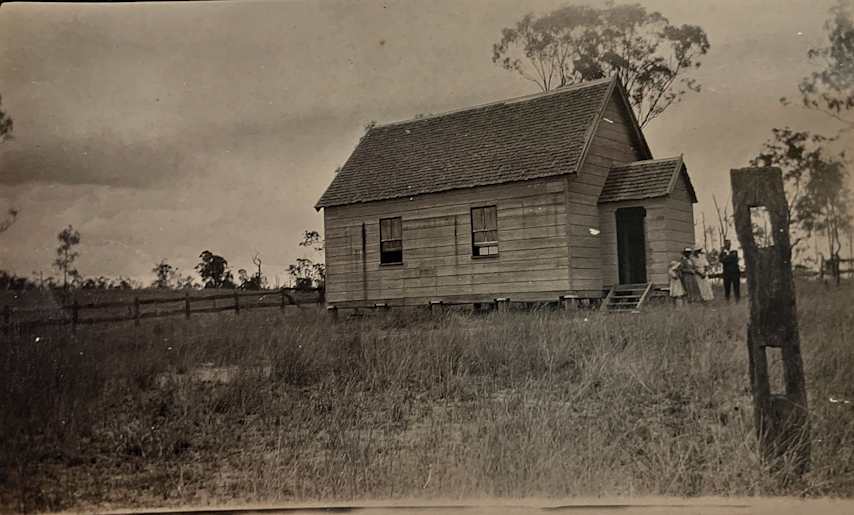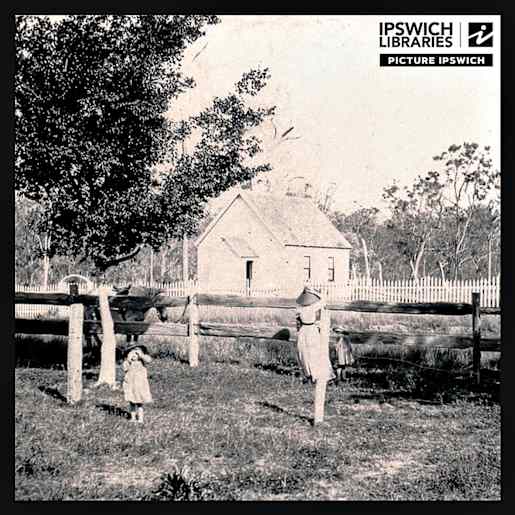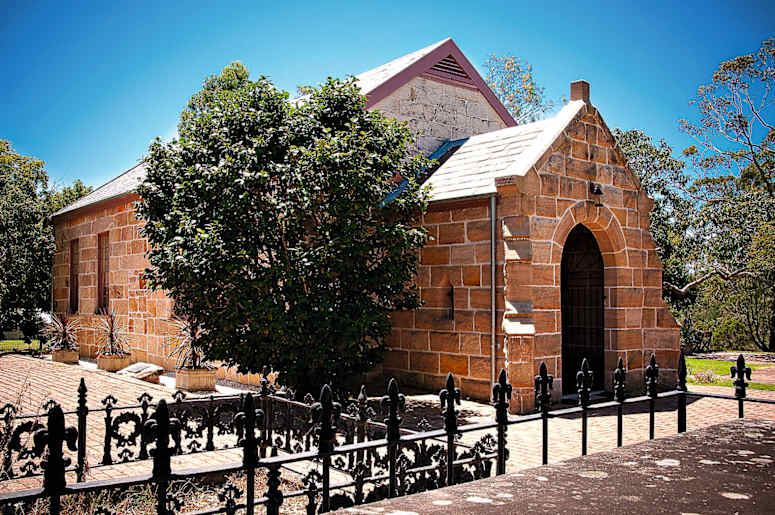
A photo from the files of PICTURE IPSWICH of the Ebenezer Methodist Church believed to date back to 1905.

This photograph of the church from the STATE LIBRARY OF QUEENSLAND is also dated 1905 but judging by the clothing of the group standing beside the porch is more likely to have been taken in the 1940s.

The Ebenezer Uniting Church - the oldest church (still standing) in Australia is situated in the town of Ebenezer NSW on the banks of the Hawkesbury River. Photo: PETER GAYLADR, Wikipedia
ENGLISH is at best, a potpouri of languages.
It contains a broad smattering of many other languages, dialects and purely made-up words.
Anyone who studied Latin roots may consider the long dead language as the base on which English formed and then became hybridised, again and again.
I am not knowledgeable enough on the subject of languages to even try to name all those others which crept in and became common parlance.
But I do love the elegance of the language, we speak.
There is a word for every nuance of life and living - even if you don’t know the right word, it’s a certainty there is one lurking deep in a dictionary somewhere to describe every feeling, every happening … everything.
And in that meandering fashion, I open Our History this week on the locality known as Ebenezer - an area bordered by Willowbank and Amberley on the east and Lanefield and Lower Mt Walker to the west.
It would be easy to assume the locality was named in honour of an early settler especially as Ebenezer was a fairly common first name back when the rural areas around Ipswich were first settled.
But it would be an incorrect assumption.
The locality’s name comes from a church, in fact many, many churches worldwide due to its use in the Old Testament Books of Samuel.
Of Hebrew origin, Eben-Ezer, translates as the ‘stone of help’ or ‘rock of faith’ and relates to the battles between the Israelites and the Philistines. In the first battle the Philistines defeated the Israelites. In the second, the Israelites prevail and the Prophet Samuel places a stone on the site of the victory as a memorial, and names it Eben-Ezer.
But what do ancient battles on the West Bank of the Jordan River north of Jerusalem have to do with a rural locality near an RAAF base?
The answer is a church.
But before we get to that, we need first to go to that general rural area’s first name after white settlement, which was Seven Mile Creek.
It was so named as it was a creek crossing roughly seven miles (11km) from Ipswich on the Drayton (later Toowoomba) Road.
The Seven Mile, as it became known, was a stopping place for traffic to the Darling Downs.
Originally a log causeway was built across the creek and in 1871, the first bridge was erected.
A village grew around the Seven Mile and in late 1868 a state school was opened in a new building beside an old butcher shop where the first headmaster, George Jacobs, had established a private school.
At the time, the Seven Mile village was already in decline due to the opening of the rail line - first to Grandchester in 1865 and onward to Toowoomba in 1867 - and many of the pupils among the first 48 enrolled, were from further afield.
Six years after the school opened, the building was moved two miles (3.2km) north to a property opposite a church.
In April 1871, that newly built church was dedicated as the Ebenezer Wesleyan (later Methodist) Church. It was called ‘Ebenezer’ not because that was the name of the district, but due to the word ‘Ebenezer’ meaning ‘rock of faith’.
Within a couple of years, the locality was being referred to as Ebenezer by the residents and even the Postmaster General. It would take until 1888, for the Department of Education to recognise the change and rename the school from Seven Mile Creek State School to Ebenezer.
But what of the church - and here I digress - the oldest church still standing in Australia was founded by a group of eight families who asked to be settled together when they arrived in the colony of New South Wales in 1803.
They were given 100 acre land grants by Governor King in a place then known as Portland Head on the Hawkesbury River.
They were joined by other families and in 1808, decided to build a church. Land was donated and the following year they built a stone church.
Under the leadership of Presbyterian James Mein, and also due to the influence of the Reverend John Dunmore Lang from Sydney town, Ebenezer Church became the first Presbyterian Church in Australia.
And the name of the church became the name of the town.
Of note to our story, the head of one of the founding eight families, was John Turnbull and a Turnbull family was a strong supporter of the Ebenezer Methodist Church - a tenuous link to illustrate that the name ‘Ebenezer’ was appended to many Protestant Churches over the years.
Perhaps the most famous is the Ebenezer Baptist Church in Atlanta, Georgia, where Martin Luther King Jnr was the pastor - as was his father, grandfather and brother.
But while the church in Atlanta is now described as a ‘mega church’, the Methodist church in Ebenezer, outside Ipswich, initially drew large attendances.
Its congregants were active in the community and active in recognising anniversaries both religious and local.
Eventually, numbers declined probably due to the weekly services changing to monthly events and the greater mobility offered by improved transport options. The world wars and the Great Depression of the 1930s also would have played a role in its fate as families moved out of the district.





